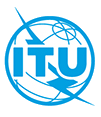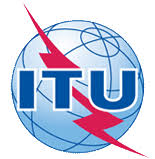Requirements and evaluation methods of non-interactive 2D real-person digital human application systems








Supplement 28 to ITU-T L-series Recommendations investigates current approaches, concepts
and metrics of CE and RE and their applicability for ICT infrastructure goods.
This Supplement:
1) introduces CE and RE,
2) describes CE as used in the ICT industry,
3) describes existing CE and RE metrics and examples of their use.
4) proposes next steps in CE and RE standardization.
The scope of this Supplement includes the following aspects: upgradability, repairability,
removability, durability, reusability, recyclability, recoverability, refurbishability and
remanufactureability. The following additional parameters, indicators and metrics are included:
recycled content, use of critical raw materials and proportion of re-used parts.

Recommendation ITU-T L.1410 deals with environmental life cycle assessments (LCAs) of
information and communication technology (ICT) goods, networks and services. It is organized in two
parts:
• Part I: ICT life cycle assessment: framework and guidance
• Part II: "Comparative analysis between ICT and reference product system (Baseline scenario);
framework and guidance".
Part I deals with the life cycle assessment (LCA) methodology applied to ICT goods, networks and
services. Part II deals with comparative analysis based on LCA results of an ICT goods, networks and
services product system, and a reference product system.

Security guidelines for using distributed ledger technology for decentralized identity management

This draft Recommendation analyses the potential deployment scheme and typical application scenarios of edge computing services, specifies the security threats and requirements specific to the edge computing services and thus establishes the security framework for the operator to safeguard its applications.

5G EC would play a key role on low latency services and traffic off-load services in 5G era. Several prominent factors would enlarge and complex the security risks to the network layer that supports 5G EC and even bring new security challenges to the network security operation. These factors would be the flexible network architectures of 5G, the variable deployment positions of EC, the various application scenarios, different types of users' private networks and access networks, etc. The boundaries among the telecommunication networks and the private networks would be more ambiguous, and the exposure surface would be expanded. Therefore, the security requirements and measures of the network layer including both of the telecommunication networks and the private networks would be recommended as telecommunication operators enjoying the benefit of EC.
